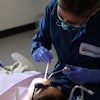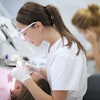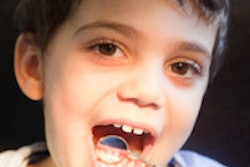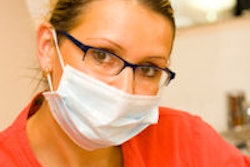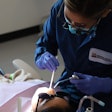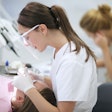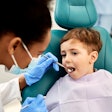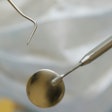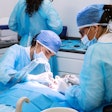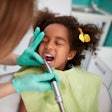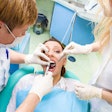
Dental therapists provide quality care while improving access to care in a cost-effective way, according to a global literature review presented at the recent American Public Health Association (APHA) annual meeting in San Francisco.
In addition, their participation in school-based programs is linked to declines in the rate of caries in several countries, the survey found.
Kavita Mathu-Muju, DMD, MPH, a pediatric dentist and an assistant professor at the University of British Columbia, Vancouver, presented an analysis of the survey during a session on "Emerging Trends in the Dental Workforce."
Jay Friedman, DDS, MPH, a former clinician and researcher at the University of California, Los Angeles, co-authored the review. He has studied the New Zealand dental therapist (DTs) model, which requires two to three years of training after high school.
The U.S. has relied on a fragmented, market-driven, private-sector approach to resolve a public health issue, Dr. Mathu-Muju said of the access-to-care issue.
“The global literature indicated that dental therapists improve access to care.”
University of British Columbia
DTs in most countries work in school-based clinics under indirect supervision by a dentist, she noted.
A review of more than 1,100 studies regarding DTs by the W.K. Kellogg Foundation released earlier this year documents evidence that they can effectively expand access to dental care, especially for children, and the care they provide is technically competent, safe, and effective, Dr. Mathu-Muju noted.
Another study, done in 1993 by Gordon Trueblood, MPH, PhD, a specialist with the Canadian medical services department, analyzed 1,799 dental restorations placed by dental therapists and dentists in Canada. The quality of restorations placed by DTs was equal to but more often than not better than those placed by dentists, he concluded
Trueblood based his analysis on data from a 1989 study by P. Ralph Crawford, DMD, and Bradley W. Holmes, DDS, both past presidents of the Canadian Dental Association, who were contracted by the Canadian government to assess the technical aspects of dental restorations placed by DTs and dentists.
The Crawford/Homes study found the technical quality of restorations by DTs rated significantly higher than those by dentists, and they had lower failure rates:
|
||||||||||||
| N = 1,860 restorations (323 patients) | ||||||||||||
An earlier study in South Australia that evaluated 8,734 restorations showed a defective rate of 1.8% for DTs, compared with 2.6% for dentists, Dr. Mathu-Muju noted (Australian Dental Journal, October-December 1973, Vol. 18:5-6, pp. 311-319; April 1976, Vol. 21:2, pp. 147-152).
And another Australian study analyzed 356 restorations placed in 115 patients by seven dental therapists (Australian and New Zealand Journal of Public Health, October 2009, Vol. 33:5, pp. 424-429). A blinded evaluation six months later by dentists judged 94.6% to be successful.
New Zealand study
A study of the long-term effects on the oral health of New Zealand schoolchildren showed the ratio of restorations to extractions fell after implementation of the School Dental Service program that incorporated dental care by DTs, Dr. Mathu-Muju noted (New Zealand Dental Journal, January 1984, Vol. 80:359, pp. 14-18).
The percentage of extractions compared with restorations fell from 73% in 1925 to 7.5% in 1954 and to 3.6% in 1964. The number of extractions per 100 children fell from 407 in 1925 to 19 extractions per 100 children in 1960. And the average number of decayed, missing and filled teeth among 12- and 13-year-old children declined from 7 in 1977 to 3.7 in 1982.
The DMFT index describes the total number of teeth (T) that are decayed (D), missing (M), or filled (F). DMFT scores in an adult range from 0 to 28 or 32. The dmft (lowercase letters) refers to children and describes the total number of teeth (t) that are decayed (d), missing (m), or filled (f), and expresses the number of affected teeth in the primary dentition, with scores ranging from 0 to 20.
"There has been a significant drop in the number of people who are edentulous, which can be attributed to the long-term effect of the DT program," Dr. Friedman told DrBicuspid.com.
In a school-based program in Saskatchewan, Canada, the dmft of 6-year-old children dropped from 6.5 to 3.4 between 1975 and 1985 after implementation of the school-based DT program, according to a report by Saskatchewan Health ("Statistical Report on the Saskatchewan Health Dental Plan: September 1, 1987 to August 31, 1988").
Also, the ratio of decayed/decayed filled teeth declined, especially among restored teeth compared with decayed teeth. And by 1988, the average number of decayed teeth among 6-year-old children dropped from 5.0 in 1975 to 1.1 in 1988.
In Hong Kong Department of Health's "Oral Health Survey 2001," the dmft among school children fell 43% from 1.5 in 1980 to 0.8 in 2001, while the percentage of caries-free 11- and 12-year-old children rose 19% from 43% to 62%. And the dmft of 12-year-olds in Singapore fell to 0.54 in 2003 from 3 in 1970.
Overall, these studies demonstrate that DTs in numerous countries have increased access to care for children, according to Dr. Mathu-Muju:
- 82% of Saskatchewan elementary schoolchildren by 1981
- 95% of Hong Kong primary schoolchildren by 2011
- 89% to 96% of Singapore elementary schoolchildren by 2009
- In Malaysia, 96% of elementary schoolchildren and 67% of secondary schoolchildren by 2003
Cost of care
The cost of providing dental care to children in school-based programs is less than comparable care by private dentists, Dr. Mathu-Muju noted.
In New Zealand, it cost $99 per child for comprehensive preventive and restorative care in 2011, compared with $102 for a comprehensive examination with no treatment with a private dentist.
In Australia, it cost $52 per child for comprehensive care in 1996, compared with $265 per child by private practitioners. In Western Australia, it cost $65 per child for comprehensive care in school-based programs in 2001.
Dr. Mathu-Muju also provided an overview of the cost of dental care for U.S. children outside of school-based programs:
- The average cost of care for children who had at least one dental visit in 2005 was $539; by 2009, the cost per child (ages 5-17 years) rose to $677.
- In 2009, $30.6 billion was spent on dental care for the country's 73.9 million children or $414 per child; however, only 51% of children had a dental visit.
The ADA has vehemently opposed dental therapists, saying they lack the necessary training to perform irreversible surgical procedures and that this model is not economically viable, despite a July report by the Pew Center on the States that found that DTs could greatly improve access to care via school-based programs run by federally qualified health centers.
"The global literature indicated that dental therapists improve access to care, provide technically competent care, and have the potential to decrease the cost of care, specifically for children," Dr. Mathu-Muju concluded.

